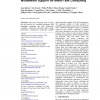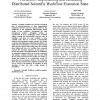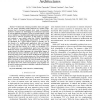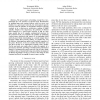CLUSTER
2010
IEEE
13 years 3 months ago
2010
IEEE
Many-task computing aims to bridge the gap between two computing paradigms, high throughput computing and high performance computing. Many-task computing denotes highperformance co...
CLUSTER
2010
IEEE
13 years 3 months ago
2010
IEEE
CCGRID
2010
IEEE
13 years 3 months ago
2010
IEEE
- Scientific workflows have become an integral part of cyberinfrastructure as their computational complexity and data sizes have grown. However, the complexity of the distributed i...
PDP
2011
IEEE
13 years 3 months ago
2011
IEEE
Abstract—Continuously reducing transistor sizes and aggressive low power operating modes employed by modern architectures tend to increase transient error rates. Concurrently, mu...
PDP
2011
IEEE
13 years 3 months ago
2011
IEEE
Abstract—The peer-to-peer networking concept has revolutionized the cost structure of Internet data dissemination by making large scale content delivery with low server cost feas...
PDP
2011
IEEE
13 years 3 months ago
2011
IEEE
—This paper proposes a parallelization scheme for parameter sweep (PS) applications using the compute unified device architecture (CUDA). Our scheme focuses on PS applications w...
PDP
2011
IEEE
13 years 3 months ago
2011
IEEE
—Energy-efficiency is becoming one of the most critical issues in embedded system design. In Network-on-Chip (NoC) based heterogeneous Multiprocessor Systems, the energy consump...
ISORC
2011
IEEE
13 years 3 months ago
2011
IEEE
—Static cache analysis for data allocated on the heap is practically impossible for standard data caches. We propose a distinct object cache for heap allocated data. The cache is...
HPDC
2011
IEEE
13 years 3 months ago
2011
IEEE
In today’s high performance computing practice, fail-stop failures are often tolerated by checkpointing. While checkpointing is a very general technique and can often be applied...
HPDC
2011
IEEE
13 years 3 months ago
2011
IEEE
Cloud computing systems are becoming an important platform for science applications. Infrastructure as a Service (IaaS) clouds provide the capability to provision virtual machines...





